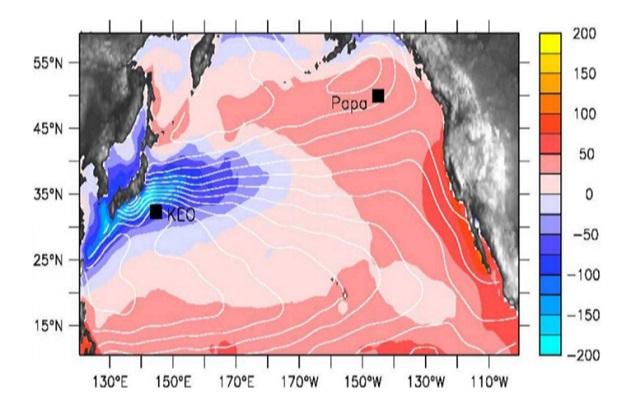Members of the PMEL Ocean Climate Stations Project (OCS) and Carbon Program recently published two companion papers describing ocean processes in the North Pacific that play a role in the Earth’s climate system. Dr. Meghan Cronin and her co-authors examined the exchanges of heat and salt affecting the mixed water layer of the upper ocean, which can have an effect on weather and climate. Using data from the OCS KEO and Station Papa moorings, plus satellites, Argo floats, and a glider, the authors closed the heat budgets at KEO and Papa, and also closed the salt budget at Papa. Their results suggested a diffusivity coefficient could help close the mixed layer budgets of other ocean properties. Building on these results, Dr. Andrea Fassbender and her co-authors used this coefficient to close the carbon budget at Station Papa, providing new insights about the carbon cycle and climate responses in this region.
Read the article in Journal of Geophysical Research Oceans, and visit the OCS site.



